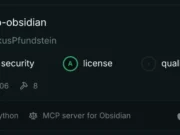Managing users is an essential part of Linux system administration. Knowing how to list all users helps you monitor system access, manage permissions, and ensure security. In Linux, user information is stored in specific system files, and several commands can be used to view this data.
Check Users from the /etc/passwd File
All local users are recorded in the /etc/passwd file. To list them, use:
cat /etc/passwdEach line in the output represents a user account, including both system and human users. The first field before the colon : is the username. To view only usernames, run:
cut -d: -f1 /etc/passwdUsing the getent Command
getent retrieves entries from administrative databases, including user data. It’s a more flexible method that also includes users managed via network services like LDAP.
getent passwdTo display only the usernames:
getent passwd | cut -d: -f1Listing Logged-In Users
If you need to see currently active users, use:
whoor
wThese commands display who is logged in, their login time, and what they are doing.
Using compgen Command
The compgen command quickly lists all users and groups:
compgen -uIt outputs a simple list of usernames, making it easy to scan through accounts.
View Groups and Root User
To list all groups, use:
getent group | cut -d: -f1To verify if a root user exists:
grep root /etc/passwdConclusion
Knowing how to list users in Linux helps you audit accounts and maintain secure access control. Whether through /etc/passwd, getent, or compgen, these commands are reliable for system management and troubleshooting.














